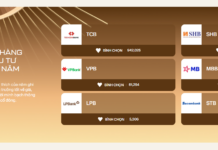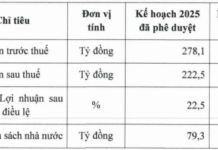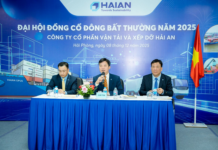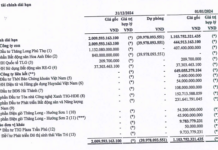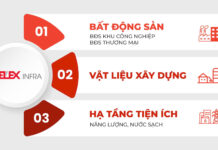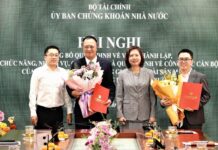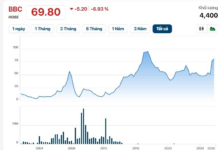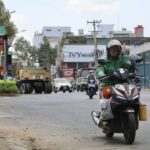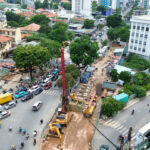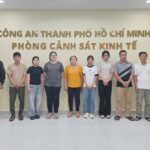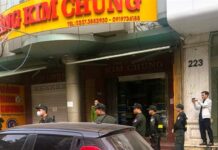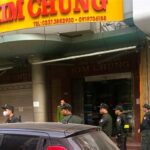As of now, Ho Chi Minh City has completed 100% of the land clearance for Metro Line 2 (Ben Thanh – Tham Luong) and is expected to commence construction of the Tham Luong Depot by the end of 2025.
This flagship project will implement special mechanisms and policies under Resolution 188, opening significant opportunities for Vietnamese enterprises in the railway industry.
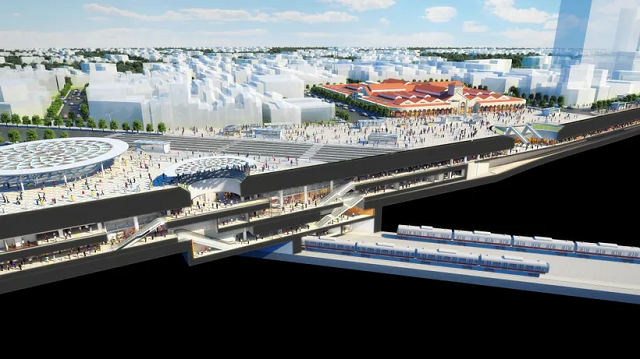 Rendering of Metro Line 2 project
|
Mr. Bui Anh Huan, Deputy Head of the Ho Chi Minh City Urban Railway Management Board (MAUR), shared this information at the recent seminar titled “Mechanical and Electrical Support Industry for Urban Railways.” This indicates that the project is entering an accelerated phase after years of preparation.
Accelerating Progress
Metro Line 2 (Ben Thanh – Tham Luong) Phase 1 spans 11.68km, covering 11 stations, with 9km underground and 2km elevated. The total investment is estimated at VND 54,000 billion (currently under review).
According to Mr. Bui Anh Huan, 100% of the land has been handed over, and MAUR is focusing on relocating technical infrastructure (electricity, water, telecommunications) to ensure a clear site, avoiding disputes during construction.
Construction of the Tham Luong Depot is expected to begin by the end of 2025. The EPC (Engineering, Procurement, and Construction) contract is slated to start in April 2026, with the goal of completion and operation by the end of 2030.
Technologically, Metro Line 2 will adopt the GOA4 automation level (fully automatic, driverless), with a design speed of 90km/h and a maximum operating speed of 80km/h.
The selection of technology and standards will follow an open standard principle, applying international norms and prices to avoid dependence on a single country or supplier.
Special Authority for Ho Chi Minh City
Metro Line 2 is a pioneering project piloting special mechanisms under National Assembly Resolution 188, granting Ho Chi Minh City greater decision-making power.
This includes no need for investment policy adjustments, with Ho Chi Minh City holding the authority to make investment adjustments.
The city is permitted to use direct procurement for consulting and EPC packages, based on thorough analysis of progress and quality factors.
Additionally, the city can independently develop and adjust urban plans aligned with transit-oriented development (TOD) and is exempt from planning adjustments if TOD differs from the general plan.
A Boost for Vietnam’s Railway Industry
A key focus of the special mechanism is to facilitate deeper involvement of Vietnamese enterprises in the project and foster the development of the railway industry.
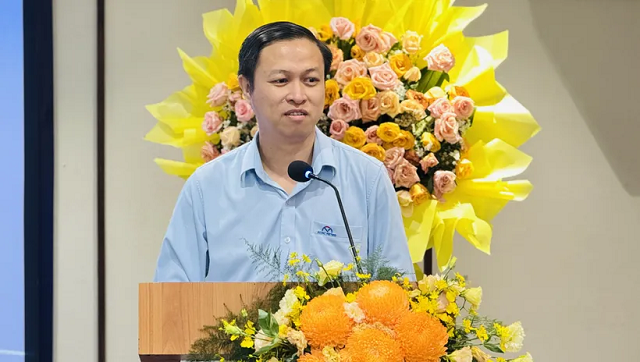 Mr. Bui Anh Huan, Deputy Head of Ho Chi Minh City Urban Railway Management Board. Photo: Dinh Du
|
Mr. Bui Anh Huan emphasized that international contractors winning the EPC contract must commit to technology transfer and workforce training for Vietnamese partners.
The project will prioritize using domestic products, goods, and services with supply capabilities and offer tax and technology incentives for enterprises involved in technology transfer.
“The government will soon issue policies on criteria for selecting Vietnamese enterprises to provide services and a list of goods eligible for direct procurement. This is a golden opportunity for Vietnam’s railway industry to develop and master technology in the future,” Mr. Bui Anh Huan stressed.
Dinh Du
– 06:43 25/10/2025
Transforming Connectivity: Major Transport Projects Linking Can Gio Set to Commence in 2026
A series of pivotal transportation projects connecting Can Gio are set to transform the region’s infrastructure. These include the Rung Sac interchange with the Ben Luc – Long Thanh Expressway, the Can Gio Bridge, and the Ho Chi Minh City – Can Gio metro line, all slated to begin construction in 2026. Additionally, the proposed Can Gio – Vung Tau sea-crossing road is under investment study, further propelling the area into a new era of infrastructure development.
Ho Chi Minh City Authorities Mandate Completion of Electric Ride-Hailing Scheme by October 31
Ho Chi Minh City is accelerating its green transformation in transportation by increasing the adoption of electric vehicles, expanding charging station infrastructure, and preparing a comprehensive plan to transition all ride-hailing services to electric fleets.










